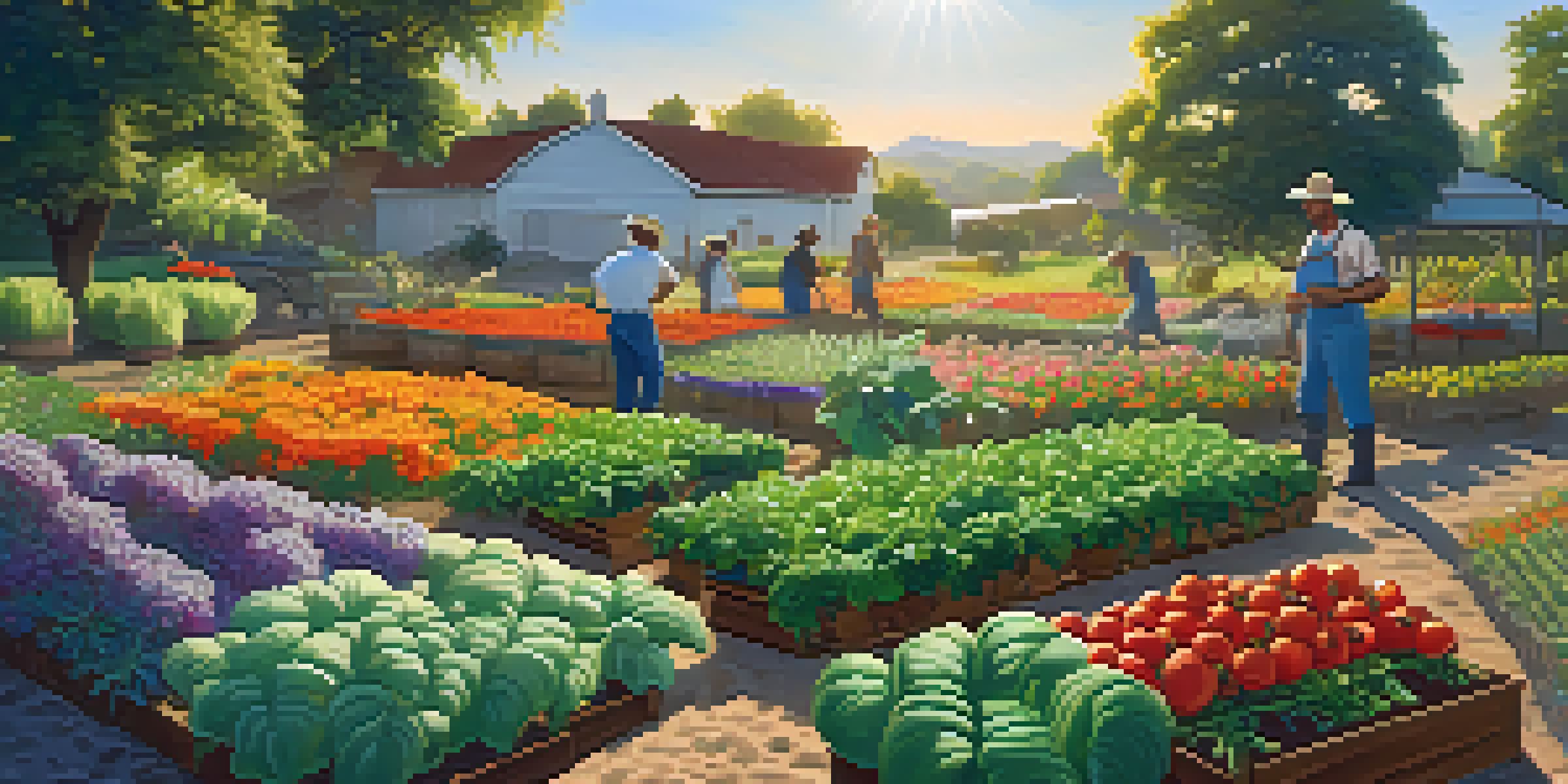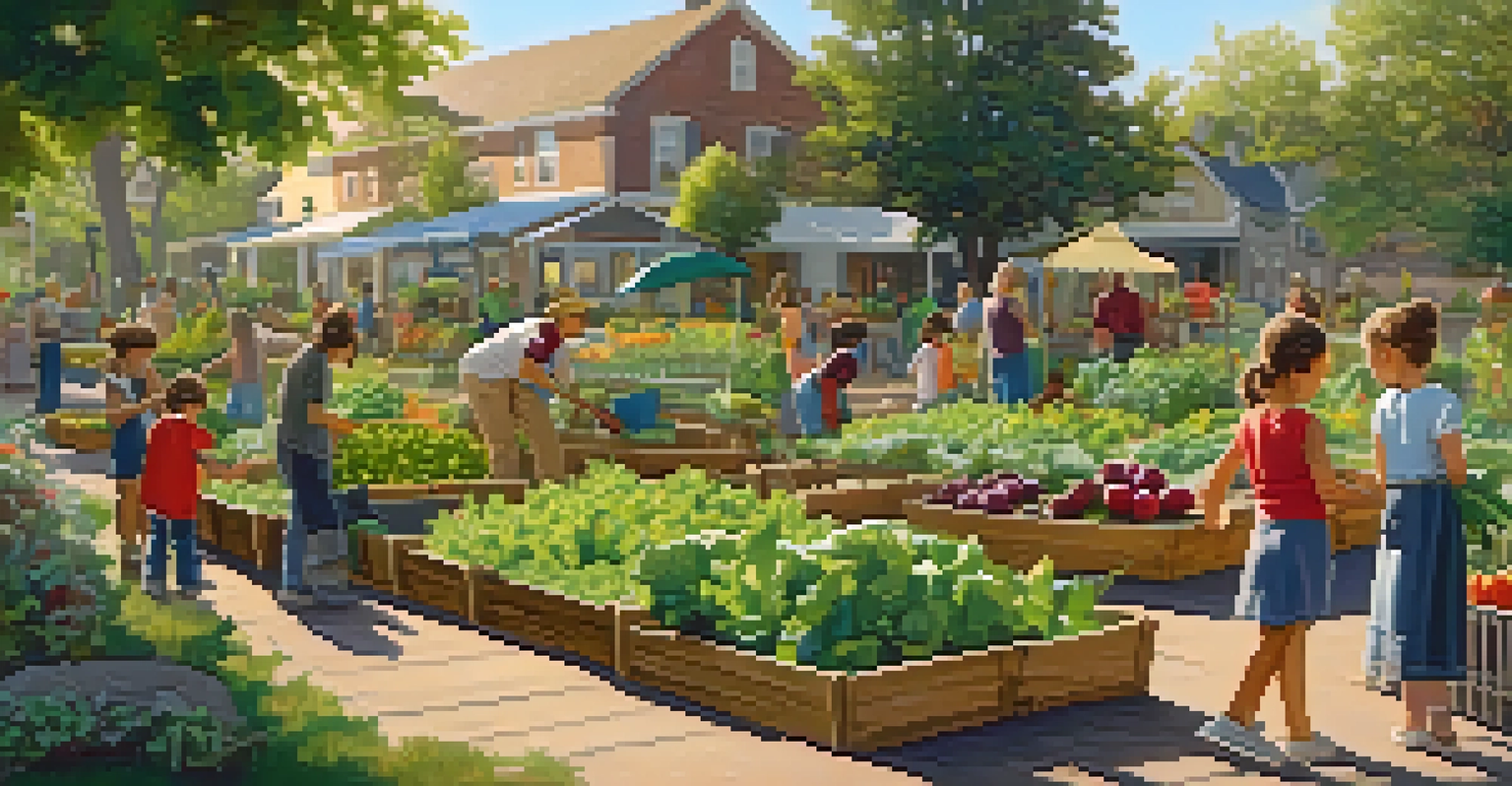Agroecology: A Holistic Approach to Sustainable Farming Practices

Understanding Agroecology: A Comprehensive Overview
Agroecology is more than just a farming technique; it's a holistic approach that integrates ecological principles into agricultural practices. By emphasizing biodiversity, this method aims to create sustainable food systems that benefit both people and the planet. Think of it as gardening on a larger scale, where every element, from soil health to crop rotation, plays a critical role in the ecosystem.
Agroecology is a way of thinking about and designing agricultural systems that are rooted in ecological principles and that focus on local knowledge and social equity.
At its core, agroecology recognizes that agriculture is deeply intertwined with the environment. This means that farmers must consider not just how to produce crops, but how their practices affect air, water, and soil quality. By embracing this interconnectedness, agroecological practices aim to enhance resilience against climate change and promote overall ecosystem health.
Furthermore, agroecology encourages the use of local knowledge and traditional practices, empowering communities to take control of their food systems. When farmers understand their local ecosystems, they're better equipped to make informed decisions that foster sustainability, productivity, and biodiversity.
The Core Principles of Agroecology Explained
Agroecology is built on several key principles that guide sustainable farming practices. One of the most important is biodiversity, which not only enhances resilience but also improves crop yields and pest management. Just like a diverse community thrives on different talents, farms benefit from a variety of plants and animals working together.

Another vital principle is the recycling of nutrients, which minimizes waste and enhances soil health. For instance, planting legumes can naturally fix nitrogen in the soil, reducing the need for synthetic fertilizers. This practice not only lowers costs for farmers but also lessens environmental impact, creating a more sustainable farming model.
Agroecology Enhances Sustainability
Agroecology integrates ecological principles into farming, promoting biodiversity and sustainable food systems.
Additionally, agroecology promotes the use of renewable resources, ensuring that farming practices are economically viable and environmentally sound. By utilizing natural inputs and on-farm resources, farmers can create a self-sustaining system that reduces dependency on external inputs, paving the way for a healthier planet.
The Role of Biodiversity in Agroecological Systems
Biodiversity is a cornerstone of agroecology, contributing to a more resilient agricultural system. When a variety of crops and livestock coexist, they can better withstand pests, diseases, and extreme weather events. Imagine a mixed garden where some plants repel pests while others attract pollinators; this synergy enhances overall productivity.
In agroecology, the best way to predict the future is to create it through local knowledge, ecological management, and food sovereignty.
Moreover, diverse ecosystems can enhance soil fertility and health. Different root structures and plant types contribute to a more complex soil structure, which can improve water retention and nutrient availability. This not only supports crop growth but also helps mitigate the impacts of droughts and floods.
Incorporating diverse plant species also promotes a balance in the ecosystem, reducing the reliance on chemical inputs. By attracting beneficial insects and microorganisms, farmers can naturally manage pests and diseases, leading to healthier crops and a more sustainable approach to farming.
Agroecological Practices for Sustainable Farming
Several practical methods embody agroecological principles, making it easier for farmers to implement sustainable practices. For example, crop rotation is a simple yet effective technique that helps maintain soil fertility and disrupt pest cycles. By alternating different crops in a field, farmers can prevent nutrient depletion and reduce pest populations.
Intercropping is another strategy that involves planting different crops in proximity to one another. This not only maximizes land use but also encourages beneficial interactions among plants, leading to increased yields. Picture a garden where tomatoes and basil grow side by side—each plant supports the other's health and growth.
Biodiversity Boosts Resilience
Diverse ecosystems in agroecology help crops withstand pests and extreme weather, improving overall productivity.
Cover cropping is also vital in agroecological systems. By planting cover crops during the off-season, farmers can protect soil from erosion, improve soil health, and promote biodiversity. This simple practice can significantly enhance the sustainability of farming operations, making them more resilient over time.
The Socio-Economic Benefits of Agroecology
Agroecology not only addresses environmental concerns but also provides significant socio-economic benefits. By promoting local food systems, it strengthens community ties and supports local economies. Farmers are encouraged to sell their produce directly to consumers, fostering a sense of community and increasing their income.
Additionally, agroecological practices can enhance food security by diversifying food sources and reducing dependency on imported goods. When communities grow a variety of crops locally, they’re better equipped to feed themselves, even in times of crisis. Imagine a neighborhood garden that supplies fresh produce to families, reducing reliance on distant markets.
Moreover, agroecology often involves empowering marginalized groups, including women and smallholder farmers. By providing access to resources and knowledge, agroecology can help these groups thrive, creating more equitable food systems that benefit everyone.
Challenges Facing Agroecological Adoption
Despite its many benefits, the widespread adoption of agroecology faces several challenges. One significant obstacle is the lack of access to resources and knowledge for many farmers, particularly in developing regions. Without proper education and support, farmers may struggle to transition from conventional methods to more sustainable practices.
Market access can also be a hurdle, as agroecological products may not always fit into existing supply chains dominated by conventional agriculture. Farmers often find it challenging to sell their produce at fair prices, which can deter them from pursuing agroecological methods. This is where community-supported agriculture (CSA) programs can play a critical role in bridging that gap.
Local Food Systems Strengthen Communities
By empowering local farmers and promoting direct sales, agroecology fosters community ties and enhances food security.
Additionally, there may be resistance to change from both farmers and consumers accustomed to traditional farming practices. Overcoming these mindsets requires education and demonstration of the long-term benefits of agroecology, emphasizing that while the transition may be challenging, the rewards are well worth the effort.
The Future of Agroecology in Sustainable Agriculture
Looking ahead, agroecology has the potential to play a crucial role in the future of sustainable agriculture. As climate change continues to impact food systems globally, the resilience offered by agroecological practices will become increasingly important. By prioritizing biodiversity and ecological balance, agroecology can help ensure food security in an uncertain future.
Furthermore, with the growing awareness of environmental issues, consumers are increasingly seeking sustainably produced food. This shift in consumer preferences creates opportunities for agroecological farmers to thrive in the marketplace. By cultivating a strong connection with consumers, farmers can foster a movement that prioritizes sustainability.

Ultimately, the future of agroecology depends on collaboration among farmers, researchers, policymakers, and consumers. By working together to promote sustainable practices, we can create a food system that is not only productive but also equitable and resilient for generations to come.